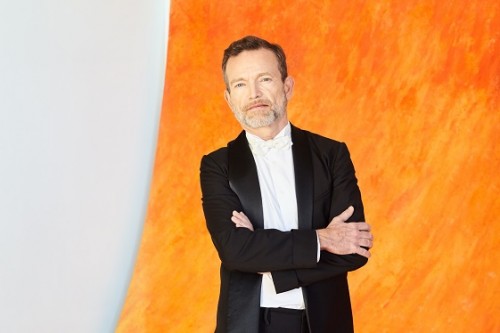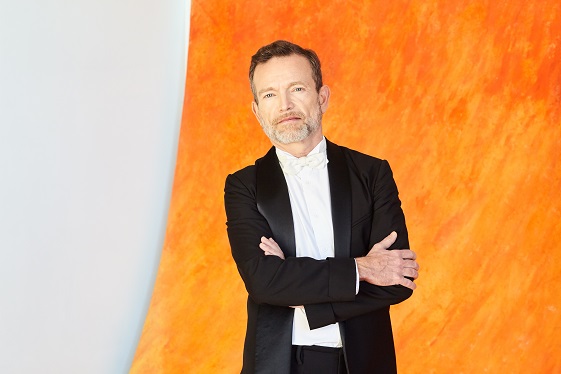 United Kingdom Guerrieri e amorosi – Monteverdi and Kapsberger: Eugénie Warnier (soprano), Anders J Dahlin and Magnus Staveland (tenors), Les Talens Lyriques / Christophe Rousset (harpsichord, organ). Wigmore Hall, London, 21.2.2019. (CC)
United Kingdom Guerrieri e amorosi – Monteverdi and Kapsberger: Eugénie Warnier (soprano), Anders J Dahlin and Magnus Staveland (tenors), Les Talens Lyriques / Christophe Rousset (harpsichord, organ). Wigmore Hall, London, 21.2.2019. (CC)

Monteverdi – ‘Chiome d’oro’ (from Settimo Libro di Madrigali, 1619); ‘Quel sguardo sdegnosetto’ (from Scherzi musicali, 1632); ‘O sia tranquillo il mare’ (from Madrigali guerrieri, et amorosi, Libro Ottavo, 1638); ‘Ohimè ch’io cado, ohimè’ (from Quarto scherzo delle ariose vaghezze); ‘Ardo e scopir, ahi lasso, io non ardisco’ (from Madrigali guerrieri, et amorosi, Libro Ottavo, 1638); Arianna: ‘Lamento d’Arianna’ (1608); ‘Si dolce è’l tormento’ (1624); Combattimento di Tancredi e Clorinda (1624)
Kapsberger – Sinfonia prima a4 con due bassi
Fresh from Strasbourg and Legrenzi’s opera La Divisione del Mondo (review click here), Les Talens Lyriques and Christophe Rousset presented a programme of Monteverdi (with an instrumental interlude by Giovanni Kapsberger, a piece curiously not mentioned at all in the programme notes for this concert).
Using an instrumental ensemble comprising, in various combinations, two violins, viola, cello, double-bass, lute/guitar, lirone and harp, and with Rousset on harpsichord or organ, this was an invigorating investigation of Monteverdi’s later madrigals (mainly taken from the 1620s and ‘30s).
While the programme included music from Monteverdi’s momentous Book VIII of madrigals, it began in sprightly manner with the declaration of love, ‘Chiome d’oro’ (‘Tresses of gold’) from Book VI, performed here by the two tenors, Andres J Dahlin (known as a haute-contre) and the Norwegian, Magnus Staveland. The two voices, working in parallel, were a joy. A pity the Wigmore’s acoustic, even from fairly far forwards, ate some of the instrumental detail. The pairing of Dahlin and Staveland was heard later in ‘Ardo e scopir, ahi lasso, io non ardisco’ (‘I burn and, alas, I do not dare to reveal’) from Book VIII, an intense lament that burns with passion that perforce remains unexpressed.
Eugénie Warnier’s light, clear, soprano adorned ‘Quel sguardo sdegnosetto’ (‘That disdainful little glance’) from Scherzi Musicali, relishing Monteverdi’s use of chromatic descent to illustrate the swooning and falling. Providing contrast in its espressivo, ‘O sia tranquillo il mare’ (‘Whether the sea be calm’) from Book VIII, again spotlighted the two tenors, Dahlin here the more expressive of the two.
Punctuating the Monteverdi was Giovanni Giralmo Kapsberger’s Sinfonia prima a 4 con due bassi. Born in Venice in around 1580, Kapsberger, moved in 1605 to Rome where he was to find great success. His Sinfonia prima dates from 1615, a delicious slip of a piece, a lament with lines that sound almost improvised and including lovely cello contributions from Isabelle Saint-Yves.
The violin-free ‘Ohimè ch’io cado, ohimè’ found Warnier absolutely living the text – no missing the anguish of the initial ‘Ohimè’ (alas!) – and finding a hushed beauty for the line ‘Occhi, belli’. It was a nice idea to end the first part with an extended work, the lament of Arianna, her grief palpable as she ponders her rejection by Theseus. Here Warnier was once again magnificent, relishing poignant dissonances (‘Lasciatemi morire!’) or the remarkable moment at ‘Parlò la lingua si, ma non già il core’ (‘Yes, my tongue speaks, but not my heart’), filled with tenderness and followed by the most powerful inter-stanza silence.
Here were only two works in the second half – even with an extended encore, this was a short concert. The brief ‘Si dolce è’l tormento’ (‘So sweet is the pain’) to an anonymous text has more than a charming simplicity to it; it also holds a fragility that was brilliantly projected here by Warnier, simply accompanied. Finally, for the advertised event, we heard the great Combattimento di Tancredi e Clorinda, a ground-breaking piece that includes a variety of instrumental effects. Here, fully, is the ‘war’ part of the programme, with the Christian knight Tancredi challenging to combat a Saracen warrior who, only after a mortal wound, is revealed as a woman (Clorinda). The three vocal participants are a narrator and the two named characters. Magnus Staveland was a fine, strong narrator, his diction amazing at speed. His stamina also was remarkable, as was Rousset’s pacing of the drama. While it is true that Clorinda (Warnier) did not sound particularly furious after the narrator announces ‘Rispondete la feroce’ (‘She answers in fury’), she was positively hypnotic at ‘Amico, hai vinto’ (‘Friend, you have conquered’).
There was an extended encore: Luigi Rossi’s ten-minute Serenata a tre, once again foregrounding the skills of Staveland and scored for three voices (Fortuna, Amore and Amante) and ensemble.
Colin Clarke
For more about Les Talens Lyriques click here.

Hey I am so happy I found your website, I really found
you by error, while I was browsing on Yahoo for something else,
Nonetheless I am here now and would just like to say cheers for a tremendous post and a all round exciting blog (I also
love the theme/design), I don’t have time to look
over it all at the minute but I have saved it
and also included your RSS feeds, so when I have time I will be back to
read a great deal more, Please do keep up the fantastic jo.